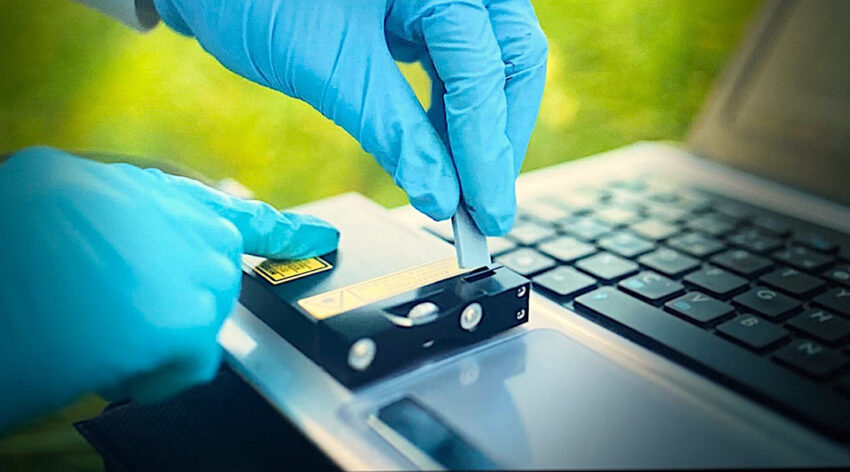3D-printed sensor detects low concentrations of pesticides, offering a cost-effective and portable solution for water monitoring.
Monitoring water pollution is of the utmost importance to maintaining ecosystems, safeguarding human health, and ensuring the sustainable use of water resources. However, to do this effectively requires advanced, portable sensor technologies that are capable of detecting even the tiniest traces of contaminants.
Addressing this critical need, a study published in Macromolecular Materials and Engineering introduces a remarkable advancement in water pollution sensing. In it, researchers report developing a cost-effective, and portable 3D-printed sensor with unprecedented sensitivity that allows it to detect exceedingly low concentrations of pesticides in water samples.
“In the last decade, efforts have been made to develop novel nanomaterials, [3D printing] techniques, and cheaper systems for monitoring and decontaminating water,” said Shanmugam Kumar, a professor of composite materials and advanced manufacturing in the James Watt School of Engineering at the University of Glasgow, and one of the study’s lead authors.
“We have been working [in this general area] for several years and, of late, on novel [3D printing]-enabled surface-enhanced Raman scattering (SERS) sensors to detect pollutants such as pesticides, antibiotics, and biomolecules in water,” he continued.
Making monitoring easier
Currently, conventional analytical techniques, such as high-performance liquid chromatography, gas chromatography, and mass spectrometry, are used for detecting pollutants in samples collected from the field. However, these methods can be expensive and sometimes time-consuming, requiring trained staff to carry out the analysis.
But the collaborative team based in Scotland, Portugal, and Germany, took an alternative approach. They turned to SERS spectroscopy, an analytical technique which provides information about chemical composition by analyzing the light that molecules scattered when adsorbed on the sensor’s surface.
“SERS is a non-destructive vibrational technique that detects vestigial amounts of molecules of interest using nanostructured materials based on plasmonic particles, such as gold and silver nanoparticles,” explained Sara Fateixa, a researcher of plasmonic nanostructures and Raman spectroscopy in the CICECO Aveiro Institute of Materials at the University of Aveiro.
But the team wanted to take this a step further, making SERS devices more compact and portable as well as more sensitive to pick up even trace contaminants. To do this, they needed to enhance the detector’s surface to increase its capacity for molecule adsorption, thereby amplifying the signal.
They explored periodic celular solids known as lattices, which are characterized by their porous architecture. However, complex 3D lattices capable of exhibiting multiple functionalities are difficult to realize via conventional manufacturing techniques.
“Lattices are usually engineered to enhance mechanical performance attributes such as energy absorption, specific stiffness, or specific strength,” said Kumar. “Although such tailored lattices exhibit tuneable mechanical properties, their functional attributes, such as self-sensing, self-healing, have thus far been seldom explored.”
The group reasoned that the integration of a sensing capability into these lattices would allow it to act as their molecular detector.
A portable, 3D-printed SERS detector
Using 3D printing the team realized the architected design of the lattices via 3D-printing, they were coated with silver nanoparticles, which serve as effective adsorbents for capturing and identifying organic molecules. This occurs mainly through electrostatic interactions between the positive charge of organic dyes and the negative charge of the metallic nanoparticle surface.
“The 3D architectures we’ve developed benefits from an optimal combination of the nanocarbon-engineered architected lattice’s large surface area and the remarkable optical properties of the metallic nanoparticles,” said Kumar. “The interaction of the metallic nanoparticles and the carbonaceous material’s chemical mechanisms creates a highly active surface for SERS analysis. This nexus opens a new field of research for developing hybrid sensors that can be used for not only detecting water pollutants but also in other analytical contexts.”
As proof-of-concept, they created a Raman test strip that was able to detect low concentrations of pesticides named thiram and paraquat in spiked water samples, including complex sources such as Aveiro estuary water and tap water. “The detection limit for paraquat in both real water samples was 1 µM, demonstrating that these hybrid sensors have great potential for on-site SERS water quality monitoring,” said the team.
“We believe that the test stripes we developed are promisors SERS sensors to be commercialized and used in the field to detect water pollutants,” added Kumar. “Scaling-up manufacturing, producing repeatable and reliable smart lattices, and performing application-dependent field tests are the hurdles to be overcome before commercialization and widespread application.”
Reference: Sara Fateixa, Shanmugam Kumar, et al., Additive Manufacturing-Enabled Architected Nanocomposite Lattices Coated with Plasmonic Nanoparticles for Water Pollutants Detection, Macromolecular Materials and Engineering (2023). DOI: 10.1002/mame.202300060

